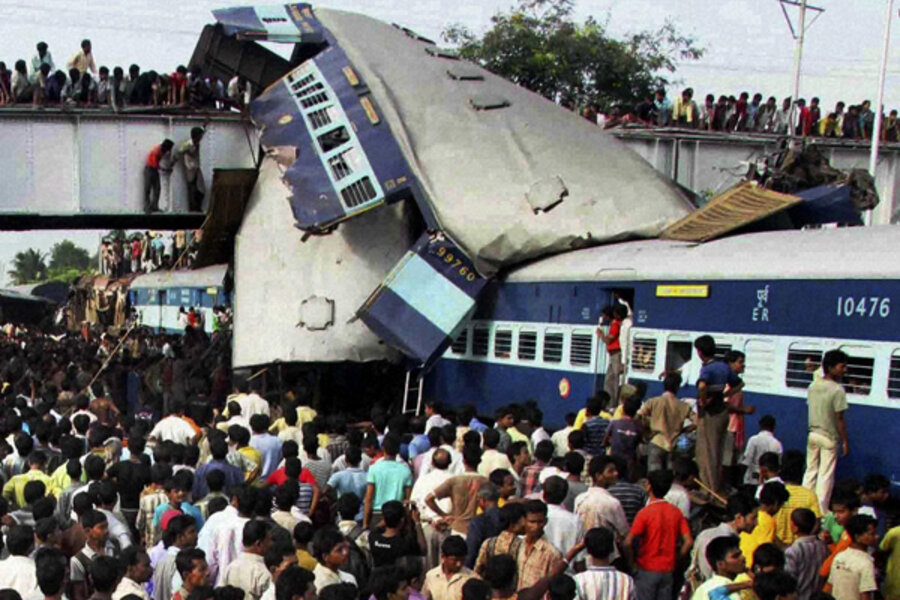India train crash: Another Maoist attack?
Loading...
| New Delhi
A train crash in eastern India killed more than 60 people on Monday with officials saying they could not rule out sabotage.
This marks the second major train mishap in two months in the state of West Bengal, the homeland state of the Maoist insurgents known as the Naxalites. Indian authorities blame the militants for a May 28 crash that killed 145 people.
However, it’s too early to know the cause of today’s collision. Many accidents occur on the sprawling Indian railway system – one of the largest in the world – due to poor maintenance.
IN PICTURES: India's hidden war
For now, the government is focused on search-and-rescue efforts at the scene of the crash, and attending to the scores of injured.
The crash occurred at 2 a.m. when an express trail hurtled at high speed into a stationary train at a platform about 125 miles north of Calcutta. The force of the crash sent the roof of one of the train carriages onto an overpass.
As is common in disasters that get media attention, the Indian government is promising money and jobs to the victims and their families. More than $10,000 and a job will be given to each of the families of those killed, said union railways minister Mamata Banerjee. Those injured will receive about $2,000.
Observers express doubt that this latest incident was sabotage. The main Naxalite movement disassociated itself from the May sabotage and promised it would not target passenger trains in the future, says analyst Amulya Ganguli.
He argues, however, that ongoing provocative actions by the militants will provoke a harsh crackdown from Delhi.
“That is the only way. When the state is challenged violently then the only option for any state is to put it down as firmly as possible, of course within the parameters of law,” says Mr. Ganguli.
Pressure mounting on government
India’s Prime Minister Manmoham Singh has said that Naxalism represents the country’s biggest internal security threat. The movement started in 1967 over land rights issues. In the past five years, however, it has gained momentum across the “Red Corridor,” a swath of economically deprived but resource-rich land spanning some 10 states and 180 districts.
The group feeds off local frustration surrounding lack of development and land seizures for mineral extraction. However, the Maoists are criticized for taking money from poor villagers at the barrel of a gun.
Pressure has been mounting on the government to take on the insurgents since they ambushed and killed 76 paramilitary police in April in the jungles of Chhattisgarh.
The government has responded by sending more than 50,000 paramilitary forces to the Red Corridor, though it has so far refused to send in the Army. Helicopters have been recalled from Africa to be used to locate Maoist bases in the jungles.
Some 400 police stations are also slated for strengthening. And delegations from seven states last week agreed to put their anti-Maoist forces under a new unified command.
IN PICTURES: India's hidden war
Related:





